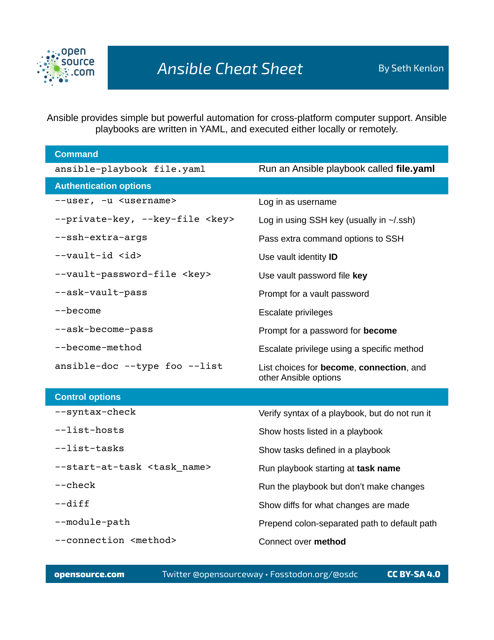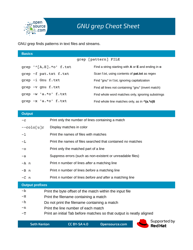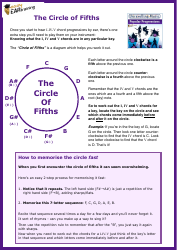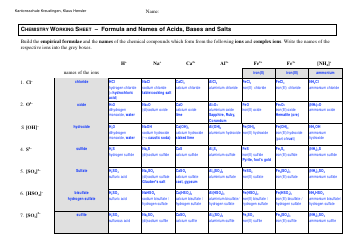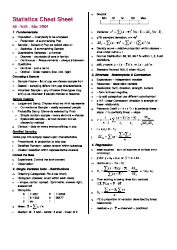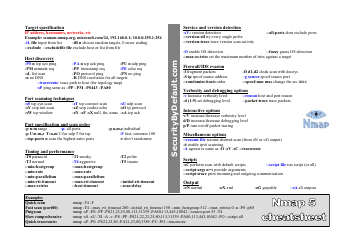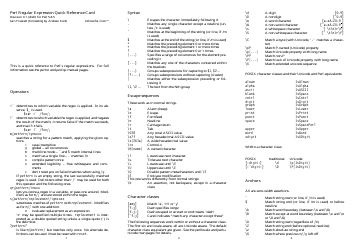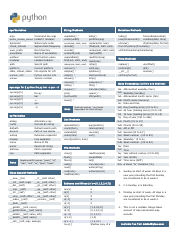Ansible Cheat Sheet - Seth Kenlon
The Ansible Cheat Sheet by Seth Kenlon is a quick reference guide that provides an overview of commonly used commands and syntax for the Ansible automation tool. It helps users easily navigate and utilize Ansible for their automation tasks.
FAQ
Q: What is Ansible?
A: Ansible is an open-source automation tool that helps manage and provision computer systems.
Q: How does Ansible work?
A: Ansible works by connecting to nodes (servers or devices) over SSH or WinRM and running tasks to configure, deploy, or orchestrate the nodes.
Q: What can I use Ansible for?
A: Ansible can be used for a wide range of tasks including configuration management, application deployment, continuous delivery, and orchestration.
Q: Is Ansible only for Linux?
A: No, Ansible can manage Windows, Mac, and Linux systems.
Q: Is Ansible difficult to learn?
A: No, Ansible is designed to be easy to use and requires minimal coding skills.
Q: Is Ansible free?
A: Yes, Ansible is free and open-source.
Q: Can Ansible manage cloud infrastructure?
A: Yes, Ansible can manage cloud resources in public and private clouds like AWS, Azure, Google Cloud, and OpenStack.
Q: How can I install Ansible?
A: Ansible can be installed on various operating systems and distributions. Refer to the official documentation for instructions.
Q: Is Ansible secure?
A: Ansible uses SSH or WinRM for secure communication, and you can encrypt sensitive data using Ansible Vault.
Q: Can Ansible be used in a team?
A: Yes, Ansible supports collaboration and can be used in a team environment for managing infrastructure.
